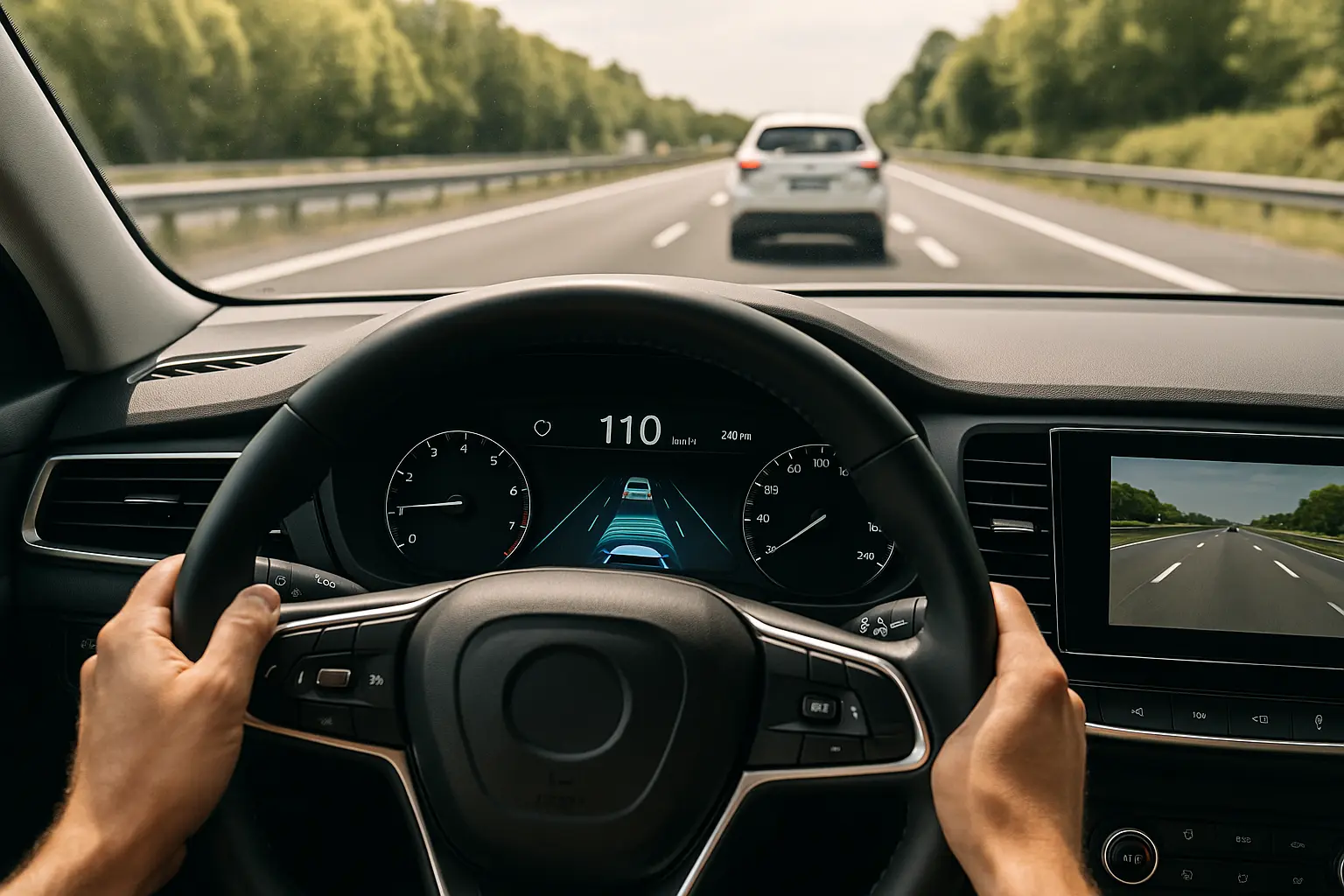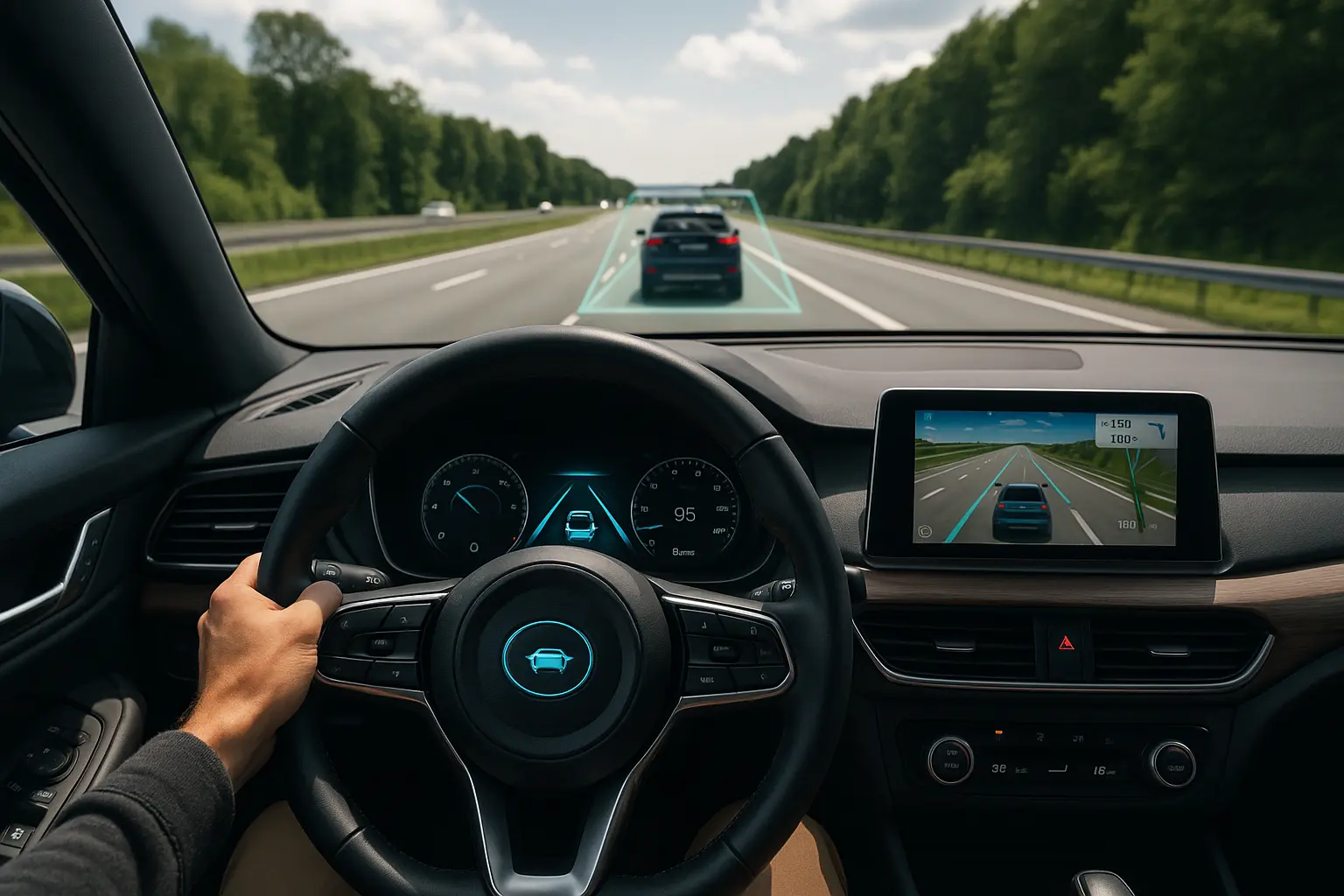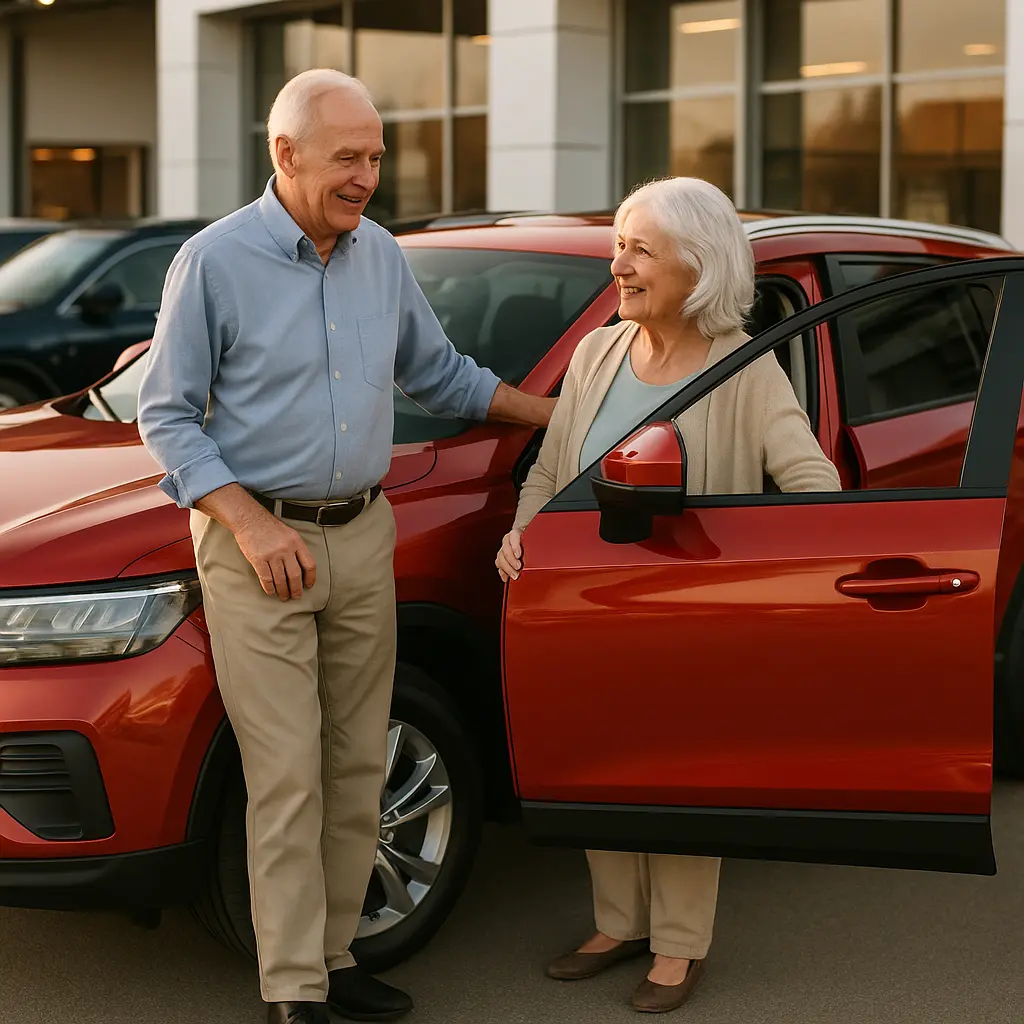Table of Contents
Introduction: What Is Adaptive Cruise Control (ACC)?
How ACC Works: Sensors, Radar & Cameras Explained
Traditional Cruise Control vs Adaptive Cruise Control
Why Adaptive Cruise Control Is Becoming Standard in 2025
ACC and the Broader Safety Tech Movement
Leading 2025 Models Offering Standard ACC in Australia
Benefits for Everyday Aussie Drivers
The Role of Government & ANCAP in the ACC Push
Common Myths About Adaptive Cruise Control
ACC in Electric Vehicles and Hybrids
Potential Drawbacks and Safety Considerations
ACC and Insurance – Does It Save You Money?
Future of ACC: Towards Fully Autonomous Driving
Buying a Car in 2025 – How to Check for ACC
Final Thoughts: ACC Is No Longer Optional

1. Introduction: What Is Adaptive Cruise Control (ACC)?
In 2025, adaptive cruise control is transitioning from a premium-only feature to a standard safety technology in many mainstream vehicles in Australia. But what exactly is it?
Adaptive Cruise Control (ACC) is an advanced form of traditional cruise control. Unlike its basic predecessor that only maintained speed, ACC automatically adjusts your car’s speed to maintain a safe following distance from the vehicle ahead. It slows down or speeds up based on traffic conditions, reducing driver fatigue and improving road safety.
2. How ACC Works: Sensors, Radar & Cameras Explained
At the heart of ACC are advanced driver assistance systems (ADAS), which combine:
Radar sensors (usually in the front grille)
LIDAR or laser-based sensors
Front-facing cameras (often mounted behind the windshield)
Ultrasonic sensors for close-range tracking
These components constantly monitor traffic ahead and send signals to the car’s electronic control unit (ECU), which then adjusts throttle, brakes, and gear shifts in real time.
3. Traditional Cruise Control vs Adaptive Cruise Control
| Feature | Traditional Cruise Control | Adaptive Cruise Control |
|---|---|---|
| Maintains set speed | ✅ | ✅ |
| Adjusts to traffic speed | ❌ | ✅ |
| Brakes automatically | ❌ | ✅ |
| Works in stop-and-go traffic | ❌ | ✅ (some models) |
| Uses sensors and cameras | ❌ | ✅ |
ACC takes the hassle out of long drives, urban commutes, and unpredictable traffic, making it a game changer in driver assistance.
4. Why Adaptive Cruise Control Is Becoming Standard in 2025
Several key reasons:
Safety Regulations: Euro NCAP and ANCAP are increasingly rewarding cars with ACC.
Consumer Demand: Aussie buyers are now prioritizing safety over raw performance.
Tech Integration: ACC systems have become cheaper to manufacture and integrate.
Competition: Automakers don’t want to fall behind in offering smart features.
ACC is now found not just in luxury cars but also in budget-friendly models like the Toyota Corolla, Mazda3, and even the MG ZS EV.
5. ACC and the Broader Safety Tech Movement
ACC is part of a larger trend of semi-autonomous driving technologies, often bundled as:
ADAS Packages
Driver Assistance Suites
Pilot Assist or Drive Assist systems
These include:
Lane-keeping assist
Blind-spot monitoring
Emergency braking
Traffic sign recognition
Highway pilot or stop-and-go assist
Together, they are moving vehicles towards Level 2 automation, where the car can control speed, steering, and braking under driver supervision.
6. Leading 2025 Models Offering Standard ACC in Australia
Here are notable 2025 models that offer ACC as standard:
Toyota RAV4 Hybrid
Mazda CX-5 and CX-60
Hyundai Ioniq 6
Subaru Forester
Kia Sportage
MG4 EV
Tesla Model 3 Highland
BYD Atto 3
Honda Civic Hybrid
Ford Puma and Everest
This feature is now widely available across SUVs, sedans, EVs, hybrids, and even hatchbacks, breaking the stereotype that safety is only for luxury.
7. Benefits for Everyday Aussie Drivers
Reduces fatigue: Especially on highways like the Hume or Pacific Motorway.
Minimises risk of rear-end collisions
Improves fuel efficiency: By smooth throttle/brake control
Makes learner and P-plater driving safer
Helps elderly drivers maintain confidence
Great for urban stop-start traffic and highway commutes
8. The Role of Government & ANCAP in the ACC Push
ANCAP (Australasian New Car Assessment Program) increasingly awards higher safety ratings to vehicles with ACC and related tech. Some government road safety recommendations for fleet and public transport vehicles now require ACC as part of minimum safety spec.
Also, with growing push for Vision Zero (zero road deaths), such safety tech is critical.
9. Common Myths About Adaptive Cruise Control
Myth 1: It’s only useful on highways.
Fact: Many systems now handle stop-start city traffic too.
Myth 2: It’s only in luxury cars.
Fact: Available in under-$30K models in 2025.
Myth 3: ACC replaces the driver.
Fact: It assists, but does not replace driver attention.
Myth 4: It increases insurance costs.
Fact: Some insurers offer discounts for ADAS-equipped cars.
10. ACC in Electric Vehicles and Hybrids
Adaptive cruise control plays a huge role in energy-efficient driving. In EVs and hybrids, smooth deceleration and acceleration directly impact range.
Popular models with smart adaptive cruise:
Tesla Model Y (with Autopilot)
Polestar 2
Nissan Leaf
Hyundai Kona Electric
Kia EV9 and EV6
Toyota Camry Hybrid
In many of these, ACC integrates with regenerative braking for optimal performance.
11. Potential Drawbacks and Safety Considerations
While ACC is a big safety win, it’s not without limits:
Fails in poor weather – rain or fog may disrupt sensors.
Misreads stationary objects at times.
False positives in complex traffic (e.g., motorcyclists, merging cars).
Driver complacency – users may become over-reliant.
To counteract these, carmakers include driver attention warnings, emergency overrides, and lane-centered systems to keep the human in the loop.
12. ACC and Insurance – Does It Save You Money?
In 2025, more Australian insurers recognise the risk-reduction value of safety tech. Some now offer 5–15% discounts for cars equipped with:
Adaptive cruise control
AEB (Autonomous Emergency Braking)
Lane-keep assist
Blind-spot detection
Always check with insurers like NRMA, RACV, or AAMI when purchasing a car.
13. Future of ACC: Towards Fully Autonomous Driving
ACC is a building block toward:
Level 3 and 4 automation
Highway autopilot systems
Vehicle-to-vehicle (V2V) communication
Smart traffic flow integration
Expect ACC to become more predictive — reacting not just to the car in front, but also to traffic patterns, maps, and AI-based behaviour prediction.
14. Buying a Car in 2025 – How to Check for ACC
When evaluating a new vehicle, check for these keywords:
Adaptive cruise
Smart cruise
Stop & Go
Radar cruise
ACC with lane tracing
Traffic Jam Assist
Also inspect vehicle spec sheets, the infotainment screen, or the steering wheel controls for ACC indicators.
15. Final Thoughts: ACC Is No Longer Optional
By 2025, adaptive cruise control is becoming standard across a wide array of car segments in Australia—from city hatchbacks to off-road-ready 4x4s. It improves safety, eases commutes, and sets the groundwork for future driving autonomy.
If you're buying a new car in 2025, make sure ACC is on your must-have list—not just for convenience, but for the added layer of protection it brings to your daily drives.
Leave a comment
Your email address will not be published. Required fields are marked *




















